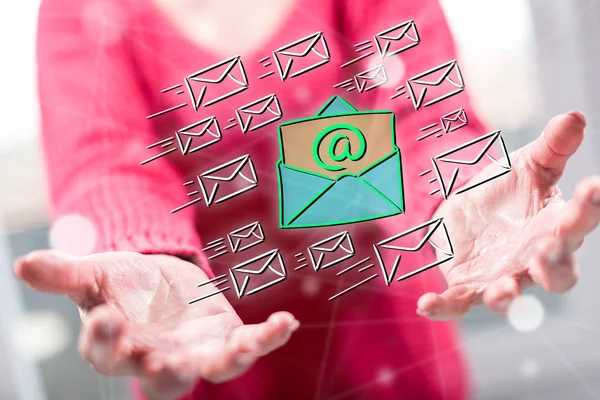Quick DMARC Check: Verifying Your Domain's Email Authentication
In today's digital age, email has become an indispensable communication tool for businesses and individuals alike. However, with the rise of cyber threats such as phishing and spoofing, ensuring the security and authenticity of emails has become paramount. One essential aspect of email security is domain-based message authentication, reporting, and conformance (DMARC). DMARC enables domain owners to protect their email domains from unauthorized use and helps recipients verify the authenticity of incoming emails. In this article, we will delve into the importance of DMARC and provide a step-by-step guide for conducting a quick DMARC check to verify your domain's email authentication. Go through this link for more details.
Understanding DMARC
DMARC is an email authentication protocol that builds on the existing Sender Policy Framework (SPF) and DomainKeys Identified Mail (DKIM) protocols. It allows domain owners to specify how their email messages should be handled if they fail authentication checks. By publishing a DMARC policy in the Domain Name System (DNS), domain owners can instruct email servers on how to handle messages that fail SPF and DKIM checks, such as quarantine or reject them.
The Importance of DMARC
Implementing DMARC offers several key benefits:
- Enhanced Email Security: DMARC helps prevent domain spoofing and phishing attacks by allowing email servers to verify the authenticity of incoming messages.
- Protect Brand Reputation: By authenticating your domain's emails, you can protect your brand's reputation and build trust with your customers.
- Improved Deliverability: Properly configured DMARC policies can help improve email deliverability by reducing the likelihood of your emails being flagged as spam or fraudulent.
- Insightful Reporting: DMARC provides detailed reports on email authentication activity, allowing domain owners to monitor and analyze their email traffic for potential threats.

Conducting a Quick DMARC Check
Performing a quick DMARC check is a straightforward process that involves verifying whether your domain has a published DMARC record and analyzing its configuration. Here's how to do it:
Step 1: Check for a DMARC Record
The first step is to determine whether your domain has a published DMARC record. You can do this by querying your domain's DNS records using a command-line tool like nslookup or an online DNS lookup tool. Look for a TXT record with "_dmarc.yourdomain.com" as the hostname.
Step 2: Analyze the DMARC Record
Once you've identified the DMARC record, analyze its contents to understand how your domain's email authentication is configured. Pay attention to the following components:
- Policy: The "p=" tag specifies the DMARC policy action to be taken when an email fails authentication. Common values include "none," "quarantine," and "reject."
- Percentage: The "pct=" tag indicates the percentage of messages to which the policy applies. It allows domain owners to gradually enforce DMARC policies without impacting all email traffic immediately.
- Reporting: The "rua=" and "ruf=" tags specify the email addresses where DMARC aggregate and forensic reports should be sent, respectively.
- Identifier Alignment: The "adkim=" and "aspf=" tags define the alignment requirements for DKIM and SPF authentication.
Step 3: Use DMARC Analyzer Tools
To simplify the DMARC check process, you can use various online DMARC analyzer tools. These tools analyze your domain's DMARC record and provide insights into its configuration, including potential issues and recommendations for improvement. Some popular DMARC analyzer tools include DMARC Analyzer, DMARC Inspector, and MXToolbox.
Step 4: Monitor DMARC Reports
After configuring DMARC for your domain, it's essential to monitor DMARC reports regularly. These reports contain valuable information about email authentication activity, including the sources of unauthorized email traffic and potential security threats. By reviewing these reports, you can identify and mitigate issues proactively, ensuring the security and integrity of your domain's email communications.
Advanced DMARC Configuration
While conducting a basic DMARC check is essential for verifying your domain's email authentication, advanced configuration options can further enhance your email security posture. Here are some advanced DMARC configuration techniques to consider:

Subdomain Policies
In addition to configuring DMARC policies for your primary domain, you can apply separate policies for subdomains. This allows you to tailor email authentication requirements based on the specific needs of each subdomain. For example, you may choose to enforce stricter DMARC policies for critical subdomains that handle sensitive information.
Custom Reporting
Instead of relying solely on standard DMARC aggregate and forensic reports, consider implementing custom reporting mechanisms to gain deeper insights into your email authentication activity. You can use tools like Google BigQuery or Splunk to ingest DMARC reports and create customized dashboards and alerts based on your organization's specific requirements.
External Service Alignment
If your organization uses third-party email service providers or marketing automation platforms to send emails on behalf of your domain, ensure that their email authentication practices align with your DMARC policy. Work with these providers to configure DKIM and SPF authentication properly and monitor their compliance with your DMARC policy using custom reporting.
Policy Gradual Enforcement
Instead of immediately enforcing a "quarantine" or "reject" policy for all email traffic, consider gradually phasing in your DMARC policy to minimize disruption. Start with a "none" policy and gradually increase the percentage of messages subject to quarantine or rejection as you gain confidence in your email authentication setup and address any issues that arise.
External Threat Intelligence Integration
Integrate DMARC data with external threat intelligence feeds to enhance your email security capabilities further. By correlating DMARC reports with known threat indicators and attack patterns, you can identify and mitigate potential email-based threats more effectively. Consider leveraging threat intelligence platforms like ThreatConnect or Recorded Future to automate this process.
Compliance and Regulatory Requirements
Ensure that your DMARC configuration aligns with relevant compliance and regulatory requirements, such as GDPR, HIPAA, or industry-specific standards like PCI DSS or SOC 2. Review your DMARC policy settings regularly to ensure ongoing compliance and make adjustments as needed to address evolving regulatory landscapes and industry best practices.

